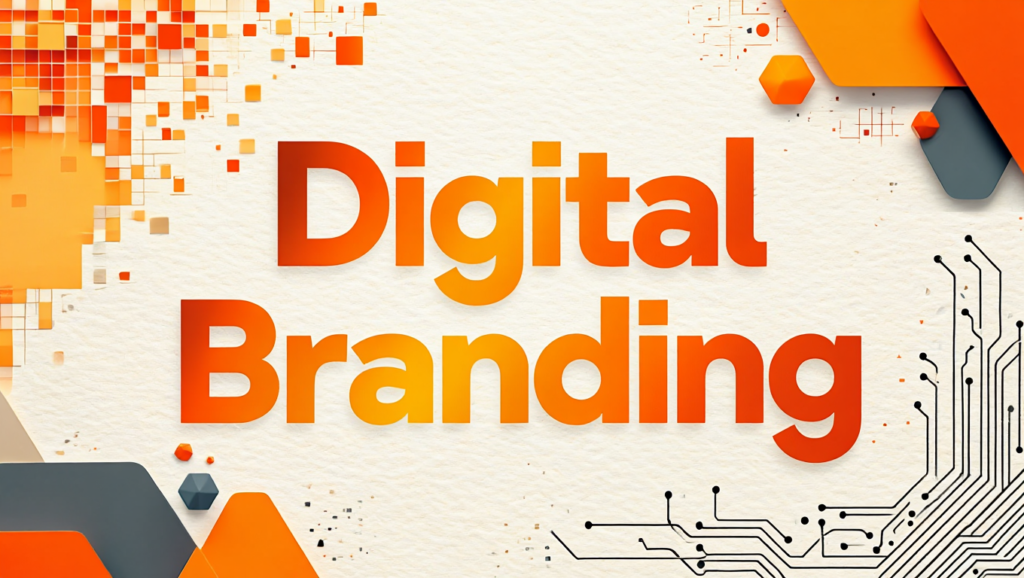
Introduction
In an era where first impressions usually happen online, digital branding determines whether a visitor becomes a customer or bounces away. Digital branding is not just a logo on a website or a smiling profile photo on social, it’s the sum of every interaction people have with your business across screens, platforms, messages, and experiences. Done right, it builds recognition, trust, and preference. Done poorly, it confuses users and erodes credibility.
Below you’ll find a full, actionable guide that explains what digital branding is, the core elements you must master, a step-by-step strategy to build or refresh your brand, practical tactics, common mistakes to avoid, and where the discipline is headed next. For a concise definition and principles that inspired parts of this guide, see the Rafenthic Branding Hub. (Source link included once in the section below.)
What is Digital Branding?
Digital branding is the process of creating and managing your brand’s identity, reputation, and experience across all online touchpoints, websites, apps, social media, email, and digital advertising. It combines visual identity, messaging, interaction design, and analytics to deliver a consistent and memorable impression.
A useful, straightforward way to think about it is this short definition (paraphrased from a branding hub):
Digital branding is the process of building and managing a brand’s presence and reputation in the online world. It encompasses websites, social media, digital content, and online interactions, and involves visual identity, user experience, content strategy, SEO, and reputation management.
For a clear, practical overview you can reference, see the Rafenthic Branding Hub.
Why it matters now
- First contact is usually digital. Many people evaluate brands via search results, websites, and social profiles before ever speaking to a person.
- Trust is fragile. Inconsistent visuals, broken links, or sloppy UX erode trust faster online than offline.
- Scale and measurability. Digital channels let you test, measure, and refine branding elements, making brand work more iterative and ROI-driven.
- Competitive advantage. A distinct digital brand helps you stand out in crowded markets and win attention.
Core Elements of Digital Branding
A strong digital brand integrates several components. Treat them as a system, not isolated tasks.
1. Visual Identity
Your visual identity is shorthand for your brand. It should be distinctive and adaptable.
- Logo & mark – scalable, responsive versions for favicon, mobile, and large displays.
- Color system – primary and secondary palettes with usage rules.
- Typography – web-safe fonts or licensed web fonts with hierarchy rules.
- Imagery & illustration style, guidelines for photos, filters, and illustrations.
- Asset library – downloadable files and examples of correct/incorrect usage.
Consistency matters: the same logo, color, and typography across channels builds recognition.
2. User Experience (UX) & Website Design
Your website is your brand’s home base. It must reflect your identity while solving user needs.
- Structure & navigation – clear information architecture.
- Performance – fast loading speeds and optimized assets.
- Mobile-first – most users visit on mobile; design for that first.
- Accessibility – inclusive design improves reach and brand perception.
- Microinteractions – small animations, transitions, and feedback reinforce quality.
Beautiful design without usability fails at branding: a brand that doesn’t deliver is a broken promise.
3. Content Strategy & Voice
Content is how your brand talks to people.
- Voice & tone – consistent personality across blog posts, emails, and microcopy.
- Messaging pillars – 3-5 core themes that every piece of content reflects.
- Content types – longform guides, short social clips, videos, FAQs, case studies.
- Editorial calendar – cadence and topics mapped to business goals and buyer stages.
Great content aligns user needs with brand promise and exposes consistency over time.
4. Search & Discoverability (SEO)
If people can’t find you, your digital brand is invisible.
- Keyword mapping to brand topics and audience intent.
- Technical SEO – mobile indexing, structured data, sitemaps.
- Content SEO – pillar pages and supporting clusters that show topical authority.
- Backlinks & mentions – earned references that signal legitimacy.
SEO translates brand visibility into organic traffic and credibility.
5. Social & Channel Strategy
Different platforms require tailored approaches, but your brand core must stay intact.
- Platform fit – choose platforms where your audience actually spends time.
- Profile consistency – handles, bios, profile images, cover art.
- Content adaptation – repurpose the same message to suit platform norms.
- Community & engagement – conversations are brand-building moments.
Social media multiplies your brand voice when done thoughtfully.
6. Reputation & Trust Management
Brand is what people say about you when you’re not in the room.
- Review monitoring – Google, industry sites, app stores.
- Response playbook – how to handle praise, criticism, and crises.
- Third-party validation – case studies, testimonials, certifications.
- Transparent policies – clear privacy, shipping, returns, and support information.
Proactive reputation work prevents minor issues from becoming brand crises.
7. Measurement & Iteration
Treat branding as testable and improvable.
- KPIs – brand awareness, organic traffic, bounce rate, NPS, conversion funnels.
- Analytics – behavior flows, heatmaps, session replay, A/B testing.
- Feedback loops – customer surveys and usability testing.
- Continuous refinement – iterate on messaging, visuals, and UX based on data.
How to Build (or Refresh) a Digital Brand – Practical Roadmap
Follow these actionable steps to move from concept to execution.
Step 1: Audit your current presence
Catalog every digital touchpoint: website pages, social profiles, email templates, ads, help docs, and third-party listings. Note inconsistencies, outdated assets, performance issues, and content gaps.
Step 2: Clarify brand positioning
Write down:
- Mission: why you exist.
- Promise: what customers should expect.
- Personality: tone, values, and key attributes.
- Target audience: specific personas and their needs.
A tightly defined positioning makes creative and tactical decisions straightforward.
Step 3: Create a digital brand guide
Include:
- Visual assets + usage rules.
- Voice & tone rules with sample copy.
- UX patterns and accessibility guidelines.
- Content pillars and SEO priorities.
- Channel rules (how the brand appears on social, email, partners).
Make the guide accessible to everyone who publishes on behalf of the brand.
Step 4: Build content & technical foundations
- Create cornerstone content that reflects your positioning (e.g., a comprehensive guide).
- Implement technical SEO and performance optimizations.
- Set up analytics and attribution so you can measure brand impact.
Step 5: Execute campaigns and measure lift
Run coordinated campaigns across owned and paid channels. Track awareness and engagement alongside conversion metrics. Use experiments to refine messaging and creative.
Step 6: Operationalize & govern
Train teams and external partners on the brand guide. Use asset management tools, templates, and approval workflows so published content stays on-brand.
Best Practices & Common Pitfalls
Best practices
- Start with clarity: a simple, shared positioning beats a complex one no one understands.
- Document and share: an accessible guide saves time and preserves consistency.
- Measure meaningful metrics: track both brand metrics (awareness, sentiment) and business metrics (leads, retention).
- Be authentic and consistent: people detect inauthenticity quickly online.
- Design for context: adapt visuals and messaging to each platform, but keep the brand spine intact.
Pitfalls to avoid
- Treating branding as a one-time project. Brands require ongoing care.
- Ignoring mobile & performance. Slow or broken mobile experiences kill brand trust.
- Over-branding at the expense of clarity. Sometimes simpler messaging converts better.
- Inconsistency across partners. Freelancers and agencies must follow the same guide.
Quick Brand Health Checklist (Actionable)
- Is your logo available in responsive sizes (favicon, mobile, large)?
- Are brand colors and fonts defined with web values?
- Does your website pass core web vitals and mobile tests?
- Are your social profiles consistent with your main brand identity?
- Do you have a content calendar aligned with SEO topics?
- Are you monitoring reviews and social mentions daily?
- Is there a single source of truth (brand hub) for assets and guidelines?
Emerging Trends in Digital Branding
- Personalization at scale: brands are using data to tailor messaging while balancing privacy.
- Conversational & voice branding: your brand voice will live in chatbots and voice assistants.
- Immersive experiences: AR, VR, and interactive web experiences expand how brands express themselves.
- AI-generated content: use it for efficiency but govern tone and accuracy carefully.
- Values-driven branding: consumers expect companies to stand for something beyond profit.
Conclusion
Digital branding is the art and science of expressing your identity across the digital world. It blends design, content, UX, SEO, analytics, and reputation management into a unified practice that earns attention and trust. Start with clarity, document your rules, measure what matters, and iterate based on real user behavior.
If you need help in digital branding of your business you can contact AdonisTechs LLC for this.


